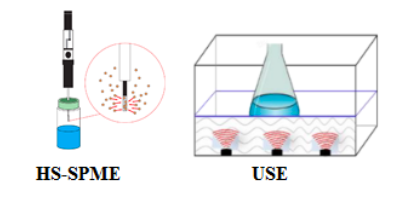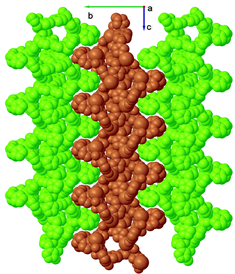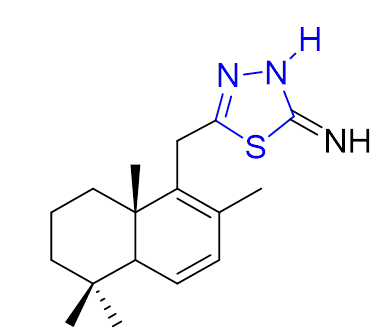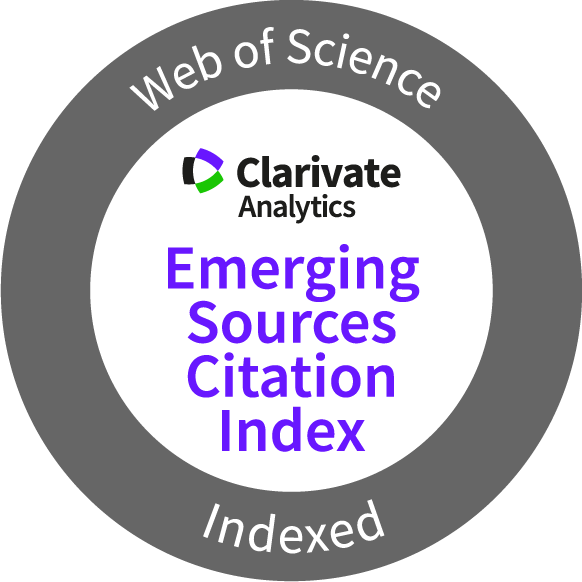Chemistry Journal of Moldova
2023 Volume 18, no.1
Author(s):
Field: Food chemistry
Type: Research paper
Issue: 2023 Volume 18, no.1
Pages: 61-69
Ani Radonić and Marina Zekić
Field: Food chemistry
Type: Research paper
Issue: 2023 Volume 18, no.1
Pages: 61-69
Full Text (PDF): Download
Abstract (PDF)
Graphical Abstract: The aim of this study was to determine the volatile compounds of Croatian cheeses in a sack of lamb skin produced from either raw cow's or goat's milk and relate them to the aroma of these traditional cheeses. Cheese extracts were obtained by headspace solid-phase microextraction and ultrasonic solvent extraction and analysed by gas chromatography-mass spectrometry.

Graphical Abstract: The aim of this study was to determine the volatile compounds of Croatian cheeses in a sack of lamb skin produced from either raw cow's or goat's milk and relate them to the aroma of these traditional cheeses. Cheese extracts were obtained by headspace solid-phase microextraction and ultrasonic solvent extraction and analysed by gas chromatography-mass spectrometry.

Downloads: 251
Author(s):
Field: Ecological chemistry
Type: Research paper
Issue: 2023 Volume 18, no.1
Pages: 46-51
Serghei Pogrebnoi, Nicolae Eremia, Dmitri Bilan, Lucian Lupascu, Natalia Bolocan, Gheorghe Duca, Svetlana Armasu, Dumitru Terteac, Vitalie Cebanu, Serghei Tincu, Alexandru Znagovan, Iulia Neicovcena, Olga Coseleva, Valerina Slanina, Fliur Macaev
Field: Ecological chemistry
Type: Research paper
Issue: 2023 Volume 18, no.1
Pages: 46-51
Full Text (PDF): Download
https://doi.org/10.19261/cjm.2023.924
Abstract (PDF)
Graphical Abstract: The chemical composition and antimicrobial activity of propolis ethanolic and water-ethanolic extracts from the central zone of Moldova have been investigated by GC-MS and liquid chromatography. There were found 21 amino acids, of which the most abundant were glutamic acid, alanine, leucine and isoleucine. The propolis extracts exhibited strong antioxidant (53.7 mg ascorbic acid eq./g extract or 113.4 mg Trolox eq./g extract and 87.5 mg ascorbic acid eq./g extract or 162 mg Trolox eq./g extract for ethanol, and water-ethanol extract, respectively) and antimicrobial activity (from 0.0055 up to 0.07%), suggesting their potential as natural agents for therapeutic use.
Graphical Abstract: The chemical composition and antimicrobial activity of propolis ethanolic and water-ethanolic extracts from the central zone of Moldova have been investigated by GC-MS and liquid chromatography. There were found 21 amino acids, of which the most abundant were glutamic acid, alanine, leucine and isoleucine. The propolis extracts exhibited strong antioxidant (53.7 mg ascorbic acid eq./g extract or 113.4 mg Trolox eq./g extract and 87.5 mg ascorbic acid eq./g extract or 162 mg Trolox eq./g extract for ethanol, and water-ethanol extract, respectively) and antimicrobial activity (from 0.0055 up to 0.07%), suggesting their potential as natural agents for therapeutic use.

Downloads: 200
Author(s):
Field: Ecological chemistry
Type: Research paper
Issue: 2023 Volume 18, no.1
Pages: 38-45
Maria Gonta, Gheorghe Duca, Elena Sirbu, Stefan Robu, Larisa Mocanu
Field: Ecological chemistry
Type: Research paper
Issue: 2023 Volume 18, no.1
Pages: 38-45
Full Text (PDF): Download
https://doi.org/10.19261/cjm.2023.910
Abstract (PDF)
Graphical Abstract: This paper presents the synthesis of a copolymer with reducing properties obtained by functionalizing chitosan with quercetin and determining the antioxidant activity of the derivatives obtained depending on the molar mass of the polymer. For this purpose, low molecular weight chitosan was obtained by oxidizing industrial chitosan with hydrogen peroxide and functionalizing with quercetin by the covalent grafting method. The comparative antioxidant properties of the composite obtained by grafting technical chitosan with quercetin and by grafting low molecular weight chitosan were studied by the DPPH (2,2-diphenyl-1-picrylhydrazyl radical) method. The obtained results indicate that a decrease in the molecular weight of chitosan contributed to its grafting with quercetin. As a result, the functionalized polymer composite acquired a higher antioxidant activity and can be successfully used to inhibit the oxidation of various organic substrates in the cosmetic, food and pharmaceutical industries.
Downloads: 172
Author(s):
Field: Food chemistry
Type: Research paper
Issue: 2023 Volume 18, no.1
Pages: 52-60
Andra Tamas, Sabina Nitu, Simona Popa, Mirabela Padure
Field: Food chemistry
Type: Research paper
Issue: 2023 Volume 18, no.1
Pages: 52-60
Full Text (PDF): Download
Abstract (PDF)
Graphical Abstract: It was studied the rheological behavior of mayonnaise prepared from fresh/frozen yolks, whit oily phase made up of mixtures of oils, taking into account the freezing time of the yolk, the ratio between the oils, as well as the storage time. It was found that the mayonnaises prepared from frozen egg yolks and those with an oily phase in which sesame oil is predominant, have a higher consistency. The oxidation stability was evaluated by determining the acid values, which increase slightly with the freezing time of the egg yolk and with the amount of sesame oil in the oily phase. Also, were carried out studies in CIELAB color space.
Downloads: 116
Author(s):
Field: Natural product chemistry and synthesis
Type: Research paper
Issue: 2023 Volume 18, no.1
Pages: 92-101
Hadjira Naoui, Mohamed Benalia, Soumaya Hachani, Amar Djeridane, Ziyad Ben Ahmed, Veronique Seidel, Mohamed Yousfi
Field: Natural product chemistry and synthesis
Type: Research paper
Issue: 2023 Volume 18, no.1
Pages: 92-101
Full Text (PDF): Download
https://doi.org/10.19261/cjm.2022.1029
Abstract (PDF)
Graphical Abstract: Samples of oils from seven types of Ficus carica L. fruits from Algeria were investigatedwith the aim to assess the chemical characteristics, quantifying sterols and tocopherols, and to analyse the fatty acids profiles using gas chromatography, and evaluation of antioxidant activity by 1,1-diphenyl-2-picrylhydrazyl method and total antioxidant activity using phosphomolybdenum methods. The results showed that the major unsaturated fatty acids of different lipid classes were linoleic (11.70-34.74%) and linolenic (1.15-35.27%), the main saturated fatty acids was palmitic. Aditionally, it was demonstrated for the first time that the studied figs oils possessed good antioxidant activity which may be associated with their alleged health benefits.
Downloads: 162
Author(s):
Field: Ecological chemistry
Type: Review
Issue: 2023 Volume 18, no.1
Pages: 9-27
Petro Linnik, Vladislav Zhezherya, Rostyslav Linnik
Field: Ecological chemistry
Type: Review
Issue: 2023 Volume 18, no.1
Pages: 9-27
Full Text (PDF): Download
https://doi.org/10.19261/cjm.2023.1049
Abstract (PDF)
Graphical Abstract: The results of research on the metal mobility and the peculiarities of their migration in the "bottom sediments – water" system of surface water bodies are summarized. The distribution of metals between different fractions of the solid phase of bottom sediments affects the potential metal mobility and their migration in the "bottom sediments – water" system.
Graphical Abstract: The results of research on the metal mobility and the peculiarities of their migration in the "bottom sediments – water" system of surface water bodies are summarized. The distribution of metals between different fractions of the solid phase of bottom sediments affects the potential metal mobility and their migration in the "bottom sediments – water" system.
Downloads: 130
Author(s):
Field: Inorganic and coordination chemistry
Type: Research paper
Issue: 2023 Volume 18, no.1
Pages: 77-85
Masahiro Mikuriya, Shun Kawauchi, Ryoji Mitsuhashi, Motohiro Tsuboi, Makoto Handa
Field: Inorganic and coordination chemistry
Type: Research paper
Issue: 2023 Volume 18, no.1
Pages: 77-85
Full Text (PDF): Download
https://doi.org/10.19261/cjm.2023.1059
Abstract (PDF)
Graphical Abstract: A heterometal complex [RuIIRuIII(n-C3H7COO)4AuIII(CN)4]n was synthesized. The X-ray crystallography elucidated a chain molecule of alternating arrangement of Ru2(n-C3H7COO)4+ and Au(CN)4– units with cis-bridging mode. Magnetic susceptibility data showed that magnetic interaction between RuIIRuIII units (S= 3/2) is negligible small with a zero-field splitting parameter D of 60 cm–1.
Downloads: 110
Author(s):
Field: Ecological chemistry
Type: Research paper
Issue: 2023 Volume 18, no.1
Pages: 28-37
Zainab Abdul-Zahra and Rashed Rasheed
Field: Ecological chemistry
Type: Research paper
Issue: 2023 Volume 18, no.1
Pages: 28-37
Full Text (PDF): Download
https://doi.org/10.19261/cjm.2023.1027
Abstract (PDF)
Graphical Abstract: This work is dedicated to the synthesis of ZnO and CeO2 nanopraticles with possible application for nitrite ions removal. The obtained nnaoparticles were characterized by X-ray diffraction, scanning electron microscopy, atomic force microscopy, Fourier transform infrared spectroscopy and UV-visible spectroscopy. Further, the produced nanoparticles were used to adsorb NO2- ions from aqueous solutions. The results showed that the nanoparticles which were heated at 90°C (hydroxide forms) presented a higher activity for nitrite ions removal than those that were heated at 400°C (oxide forms). This may be related to nitrite ions preferential adsorption to hydroxide forms rather than to oxide forms; in both cases (90°C and 400°C), zinc oxide nanoparticles presented higher nitrite removal activity.
Downloads: 104
Author(s):
Field: Inorganic and coordination chemistry
Type: Research paper
Issue: 2023 Volume 18, no.1
Pages: 70-76
Irina Voda
Field: Inorganic and coordination chemistry
Type: Research paper
Issue: 2023 Volume 18, no.1
Pages: 70-76
Full Text (PDF): Download
Abstract (PDF)
Graphical Abstract: The use of a pillar bridging ligand coordinating through two imidazole rings and multidentate carboxylate ligand with zinc(II) generates a bidimentional coordination polymer {[Zn3(BIBPh)3(BTC)2]∙H2O}n. It has been structurally characterised and investigated by IR and thermogravimetric methods. Each metal ion is four coordinated exhibiting a slightly distorted tetrahedral coordination.

Graphical Abstract: The use of a pillar bridging ligand coordinating through two imidazole rings and multidentate carboxylate ligand with zinc(II) generates a bidimentional coordination polymer {[Zn3(BIBPh)3(BTC)2]∙H2O}n. It has been structurally characterised and investigated by IR and thermogravimetric methods. Each metal ion is four coordinated exhibiting a slightly distorted tetrahedral coordination.
Downloads: 98
Author(s):
Field: Natural product chemistry and synthesis
Type: Research paper
Issue: 2023 Volume 18, no.1
Pages: 86-91
Svetlana Blaja, Lidia Lungu, Alexandru Ciocarlan, Nicoleta Vornicu, Aculina Aricu
Field: Natural product chemistry and synthesis
Type: Research paper
Issue: 2023 Volume 18, no.1
Pages: 86-91
Full Text (PDF): Download
Abstract (PDF)
Graphical Abstract: The study describes the synthesis of novel tetranorlabdane compounds bearing 1,3,4-thiadiazole units and intermediary tetranorlabdane compounds with thiosemicarbazone fragment. The structures of the synthesized compounds were confirmed using IR and 1H, 13C, and 15N NMR spectroscopy. The in vitro antifungal and antibacterial activities of the tetranorlabdane compounds with thiosemicarbazone and 1,3,4-thiadiazole units have been evaluated. One of the tested compounds has an excellent activity against five strains of fungi and two species of bacteria at minimum inhibitory concentration values of 0.125 and 2.5 µg/mL, respectively.

Graphical Abstract: The study describes the synthesis of novel tetranorlabdane compounds bearing 1,3,4-thiadiazole units and intermediary tetranorlabdane compounds with thiosemicarbazone fragment. The structures of the synthesized compounds were confirmed using IR and 1H, 13C, and 15N NMR spectroscopy. The in vitro antifungal and antibacterial activities of the tetranorlabdane compounds with thiosemicarbazone and 1,3,4-thiadiazole units have been evaluated. One of the tested compounds has an excellent activity against five strains of fungi and two species of bacteria at minimum inhibitory concentration values of 0.125 and 2.5 µg/mL, respectively.
Downloads: 190






